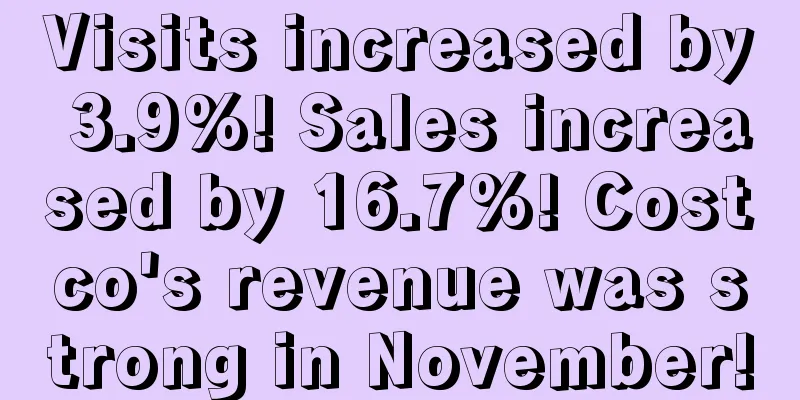|
Product photography is the most important part of e-commerce. Without product pictures, the conversion rate will be greatly reduced. High-quality product pictures can attract users and build brand trust.
In addition to taking pictures, optimizing pictures according to the platform and marketing channels plays a vital role in promoting products. In this article, we will introduce in detail the classification of product pictures, the image formats required for each channel, DIY photography and editing skills, and image SEO optimization.
Before you start taking photos, decide what type of product photos you need. Here are the five main types of photos and their corresponding photo shooting and editing requirements:
The most common type of pictures in e-commerce are those that only take pictures of products. These pictures show the products to consumers directly, and the background is usually white.
Below are some product photos taken by Wee Squeak store: You can see that the product background is white. Most platforms require the main image to be white, such as Amazon. A white background also makes it easier for sellers to edit and optimize the image. On platforms such as Amazon and Google, it is recommended that the background of product images be mainly pure white, gray or light colors.
The second type of image is the one that shows the product in action. It’s often used on social media, blogs, or advertising platforms, but it’s also becoming increasingly popular to show action pictures on product pages.
This type of image is different from the previous types. Social media is more free and creative, and you can take pictures of various backgrounds or demonstrate how to use the product.
But please note that each social platform has its own target market and style, so the product photos you take should be suitable for the style of the platform. Here is an introduction to the image style and shooting techniques for each social media platform:
As the platform with the widest audience, the product pictures posted on Facebook accounts need to stand out from the crowd and attract consumers. Sellers need to show their own brand style. Tips for taking product photos for Facebook include:- Stay up to date with the latest trends and image formats;
- The images are clear and impactful;
- Using scene pictures or pictures with colorful backgrounds are more likely to catch people's attention.
It is also known that 84% of users aged 30-49 are active on the Facebook platform, and 75% of users on the platform have an annual income of US$75,000.
Instagram is a platform that mainly features images, with very little text, so the visual effects and style of the images become particularly important. Here are some tips for taking product photos on Instagram:- Use eye-catching lifestyle images or colorful images
- Unless your product is unique, it is not recommended to use a white background.
- Keep your images consistent to identify your brand style
Data shows that 75% of Instagram users are under 30 years old, and 83% say they have been attracted by new products on Instagram. If your pictures are popular on Instagram, the interaction rate is 4 times higher than Facebook.
- Pinterest images come in a variety of sizes;
- 79.5% of active Pinterest users are women;
- 50% of Pinterest users are millennials;
Users tend to use Pinterest to focus on specific areas, and some categories are particularly popular on Pinterest, such as 70% of users search for accessories, watches and jewelry on the Pinterest platform. 52% of users have purchased more than $500 in beauty products in the past six months.
Snapchat mainly features life pictures, which are not the elegant and fashionable pictures on Instagram, but are more rough and close to life. The style is mainly interesting and humorous, and emoticons are often used. 4. Product images of the campaign Each marketing channel has its own advertising requirements, and sellers also need to optimize images accordingly.
- Facebook Ads Product Image Requirements
For Facebook ad campaigns, sellers need to ensure that the text on the image accounts for less than 20%. You can use a combination of scene images and product images. The following are the specific image specifications for various types of Facebook ads:
The image should be 1080 × 1080 pixels. The image should be clear, concise and eye-catching.
The image should be 1080×1920 pixels and should tell a story in an engaging way.
The pixel of the picture is 1080 × 1080. Sellers can use a combination of different pictures to highlight the product features, and can add up to five pictures.
The image should be at least 400×150 pixels and highlight a product and its features. You can test the images to see whether the scene image works better or the product image works better.
Facebook Audience Network The image must be 1200×628 pixels.
Different Messenger ad types have different image requirements. Messenger Stories require images to be at least 90×160 pixels. Sponsored ads require images to be 1200×628 pixels. Messenger Inbox requires images to be 254×133 pixels.
- Instagram Ads Product Image Requirements
Instagram posts must be simple and stylish. Here are the image requirements for various Instagram ads:
The image pixel requirement is 1200×628.
The image pixel requirement for Snap ads is 1080×1920. You can combine images with text to attract users' attention. Alternatively, you can also combine images with GIFs and emojis to build a video.
Instagram Carousel Image Ads The image pixel requirement is 1080×1080.
5. Homepage and Category Images The homepage pictures of self-built websites are mainly scene pictures or product pictures, but if the pictures are more unique and diverse, they can attract more traffic. Before taking photos, you need to decide on a style to ensure that all your photos have a consistent look. This will also make your photo shoot more efficient. Here are some key points to focus on when developing a photography style:
Sellers need to first determine the image type, as well as the composition and layout of each image, to ensure that the angles and styles of different products are consistent.
2. Set the background board In addition to pure white, you can also choose other colors of background boards, such as: You can also shoot with a white background and then change the background color later.
To maintain consistency in the images, the focal length must remain constant, which affects the composition of the image. In short, all images should be taken with the same lens and camera settings. Camera settings include aperture, shutter speed, tripod height and distance to the subject, white balance, etc.
When taking pictures, the context of the product is important.
Inconsistent saturation in your images can make you look very amateurish.
If you use shadows in your images, make sure they are consistent in proportion, size, and position across all images.
The template of the product image must be consistent. You can use Photoshop to set the template:- First create a product image template file
- Then set the horizontal and vertical guides
- Set internal reference lines and save
- Insert the image and center it to make sure it fits the template
Product DIY Photography Tips
When taking product photos yourself, a tripod is one of the most important pieces of equipment. Without a tripod, the quality and accuracy of the images cannot be guaranteed. A tripod can stabilize the camera to prevent shake and blur, while also maintaining a consistent camera height.
Here are some tips on how to choose a tripod:- There are three main types of tripod heads: pan head, ball head, and universal joint. Since product photography does not require much camera movement, most of the time it is panning, and the lens focal length is above 300mm, it is recommended to use a universal joint.
- The center support refers to the support in the middle of the tripod. It allows you to move the tripod up and down and adjust the height. This function is rarely adjusted during product photography.
- To avoid bending over to look at the camera, it is recommended to purchase a tripod that matches your standing height.
- The brackets can be tubular or in other shapes. Note that the taller the tripod is, the less stable it will be.
- Try to find a tripod that has good stability and balance.
Although it is now possible to use mobile phones to take photos, it is still recommended that sellers invest in a digital camera. You can choose a camera with the following features: When taking pictures, do not use a wide-angle lens to ensure that the image is not distorted. The focus needs to be clear and the white balance needs to match the lighting environment.
After debugging your camera and tripod, you need to adjust your lighting environment. Without enough light, the white background will not appear pure white in the picture. There are two options for lighting, one is the lights in the studio, and the other is natural light. The studio is suitable for pure product photography, and natural light is suitable for scene photography. For studio lighting, you need to purchase light boxes, bulbs, etc.
Don’t forget to show all angles of your product so that consumers can get a full picture of it. Keep moving the product around to find the best shot, and use close-ups.
Sellers need to prepare the following equipment to DIY product photos:
After taking product photos, the next step is to edit them, including background editing, shadows, color correction, etc. Post-processing is an important step to ensure that the pictures can be displayed perfectly. Sellers can use the following editing tools:
Use these tools to adjust and edit product images to ensure image quality:- Edit backgrounds to create a unified style
- Adjust the image color to ensure that the product in the image is close to the real image
- Adjust the image size according to the channel
- Use the correct format, such as JPG, PNG, GIF, etc.
- Resize images to fit various devices
After completing the above steps, the best thing to do is to optimize the image SEO. You need to not only ensure the loading time of the image, but also bring conversion rate. The following steps can be taken for image SEO optimization:
Name your images correctly When saving product images, the image name is very important. Try to use concise text to convey the image content, and do not use numbers in the name. Use hyphens in the name to improve readability in the algorithm, and do not use spaces.
When uploading images to websites or social media, try to compress them without sacrificing quality. This will ensure fast loading speed without destroying the quality of the image.
After compressing and uploading the files, add alt text to each image. Here are the correct ways to use alt text:- Only use alt text in pure product images
- Use model or serial number in alt attribute
- Use simple language to describe the content
That’s it for your complete product image guide. Follow the steps above to optimize your images.
Amazon Coupons Complete Guide and Ultimate Setup Guide The Ultimate Guide to Setting Up Vacation Mode on Amazon
Amazon sellers’ comprehensive strategy for preparing for the 2019 peak season
What should I do if the Amazon FBA inventory shows the Reserved status? Amazon has too much inventory? These methods can help you clear out the inventory
Packaging not up to standard? See how these sellers solved it Autumn product selection guide: These products will become hot sellers
The first step to boost sales during peak season: 2019 Halloween product selection guide 3000+ 5-star reviews, these unique products on Amazon have received rave reviews
5 Key Performance Indicators (KPIs) Amazon Sellers Must Pay Attention to
How to combine Facebook ads and email marketing to increase conversion rates
Amazon A/B Testing: The Optimization Secrets Used by Big Sellers Essential tricks for sellers: Tips and tricks for bidding on Amazon ads
Amazon sellers, here is a guide to optimizing your product listings for mobile devices!
Statement: When reprinting this article, the title and original text must not be modified, and the source and original link must be retained. |










